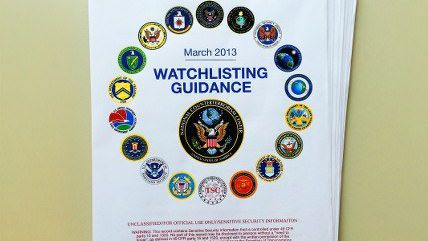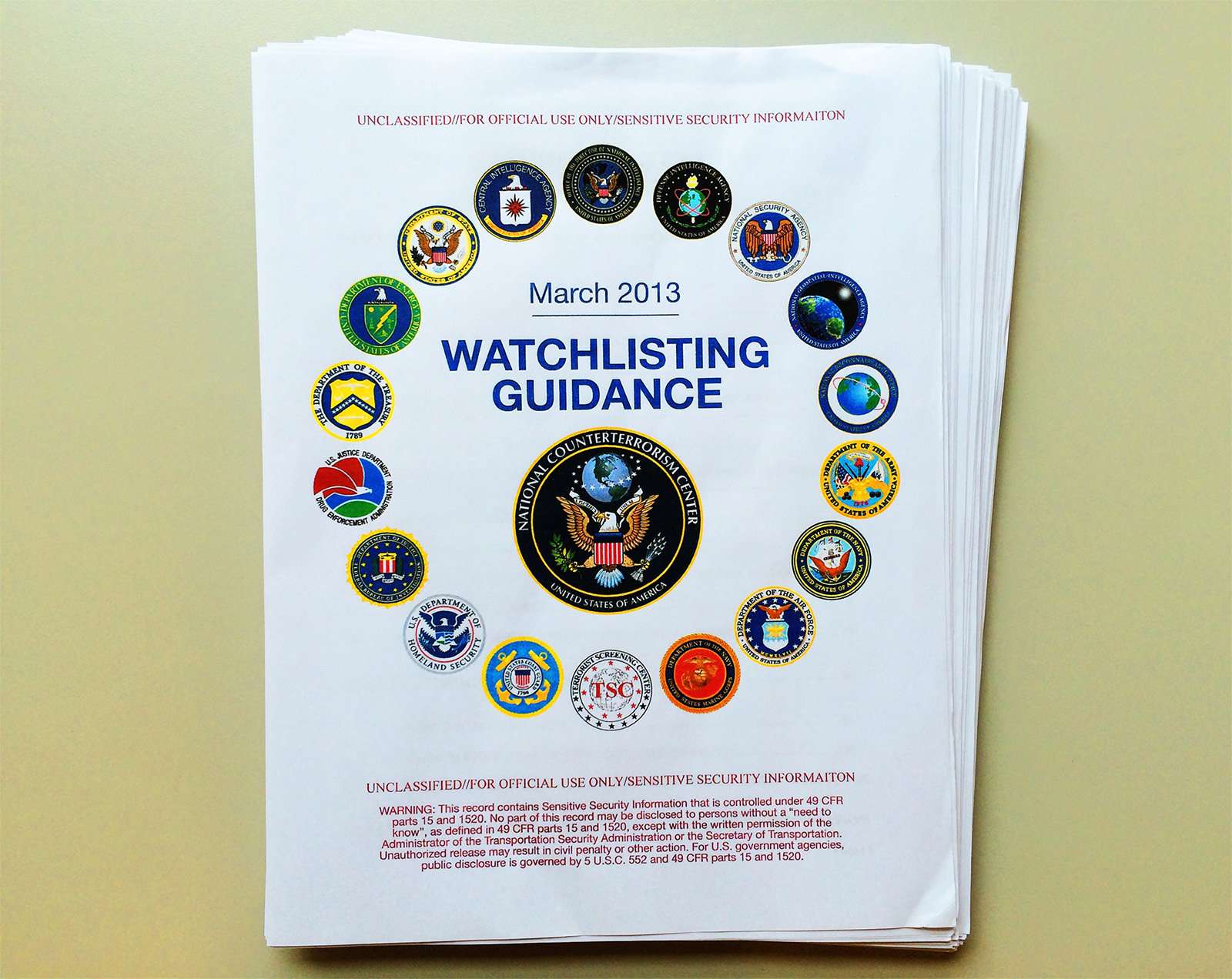How Much Longer Until the Government Thinks Everybody Is a Terrorist?


The latest document leak from The Intercept (that's Glenn Greenwald's new web publication) comes not from Edward Snowden, it seems. Instead, an unidentified source within the intelligence community has provided The Intercept with the secret 166-page document that explains how, exactly, the government puts people on terrorist watch lists and what happens with that information.
Dirty Wars author Jeremy Scahill, along with journalist Ryan Devereaux, scoured the documents to break down the details for readers. There is a lot to examine. Looking it over, I see three major take-aways:
The standard for getting on the watch list is low. "Reasonable suspicion" is enough. The Intercept notes:
The document's definition of "terrorist" activity includes actions that fall far short of bombing or hijacking. In addition to expected crimes, such as assassination or hostage-taking, the guidelines also define destruction of government property and damaging computers used by financial institutions as activities meriting placement on a list. They also define as terrorism any act that is "dangerous" to property and intended to influence government policy through intimidation.
This combination—a broad definition of what constitutes terrorism and a low threshold for designating someone a terrorist—opens the way to ensnaring innocent people in secret government dragnets. It can also be counterproductive. When resources are devoted to tracking people who are not genuine risks to national security, the actual threats get fewer resources—and might go unnoticed.
"If reasonable suspicion is the only standard you need to label somebody, then it's a slippery slope we're sliding down here, because then you can label anybody anything," says David Gomez, a former senior FBI special agent with experience running high-profile terrorism investigations. "Because you appear on a telephone list of somebody doesn't make you a terrorist. That's the kind of information that gets put in there."
And The Intercept notes, the names on the watch list show up when local law enforcement agencies interact with the listed folks, so somebody on the list is going to be treated with even more suspicion if he or she gets pulled over for speeding (for example) and might not even know why.
This isn't a small list, by the way. The Associated Press earlier in the month noted that the federal government has added more than 1.5 million names to the watch list over the past five years, though many have also been subsequently removed.
Yes, there is profiling. There is a mechanism to elevate entire "categories of people," who are on the watch list to add to "no fly" lists, again without any evidence the individuals are actually plotting any sort of acts of terrorism:
The rulebook does not indicate what "categories of people" have been subjected to threat-based upgrades. It is not clear, for example, whether a category might be as broad as military-age males from Yemen. The guidelines do make clear that American citizens and green card holders are subject to such upgrades, though government officials are required to review their status in an "expedited" procedure. Upgrades can remain in effect for 72 hours before being reviewed by a small committee of senior officials. If approved, they can remain in place for 30 days before a renewal is required, and can continue "until the threat no longer exists."
"In a set of watchlisting criteria riddled with exceptions that swallow rules, this exception is perhaps the most expansive and certainly one of the most troubling," [Hina] Shamsi, the ACLU attorney, says. "It's reminiscent of the Bush administration's heavily criticized color-coded threat alerts, except that here, bureaucrats can exercise virtually standard-less authority in secret with specific negative consequences for entire categories of people."
If you're on the list, all your stuff gets picked over. If the federal government thinks you might be a terrorist, they are instructed to get as much information about you as they can when they yank you aside at airports or border crossings:
In addition to data like fingerprints, travel itineraries, identification documents and gun licenses, the rules encourage screeners to acquire health insurance information, drug prescriptions, "any cards with an electronic strip on it (hotel cards, grocery cards, gift cards, frequent flyer cards)," cellphones, email addresses, binoculars, peroxide, bank account numbers, pay stubs, academic transcripts, parking and speeding tickets, and want ads. The digital information singled out for collection includes social media accounts, cell phone lists, speed dial numbers, laptop images, thumb drives, iPods, Kindles, and cameras. All of the information is then uploaded to the TIDE database.
Screeners are also instructed to collect data on any "pocket litter," scuba gear, EZ Passes, library cards, and the titles of any books, along with information about their condition—"e.g., new, dog-eared, annotated, unopened." Business cards and conference materials are also targeted, as well as "anything with an account number" and information about any gold or jewelry worn by the watchlisted individual. Even "animal information"—details about pets from veterinarians or tracking chips—is requested. The rulebook also encourages the collection of biometric or biographical data about the travel partners of watchlisted individuals.
Read the entire Intercept story here. They've also posted a PDF of the full "Watchlisting Guidance" report here.


Show Comments (47)